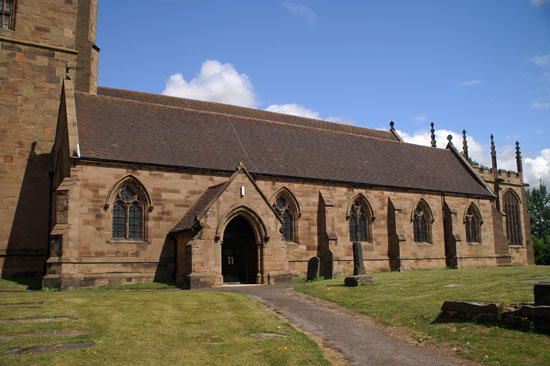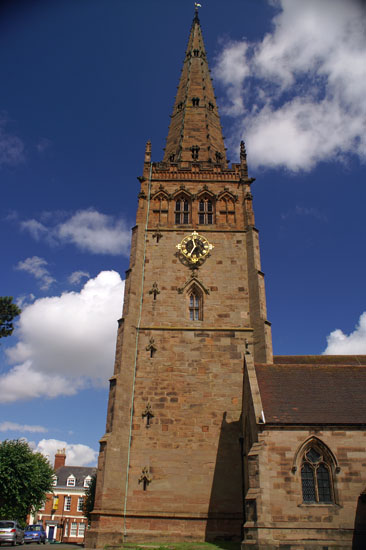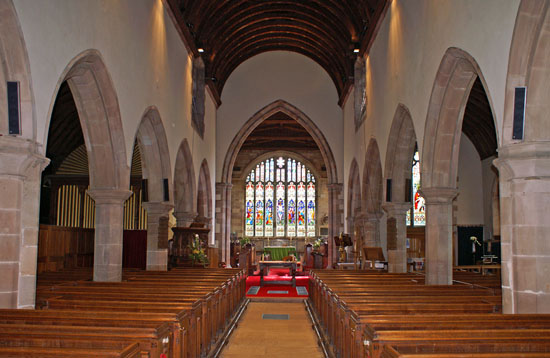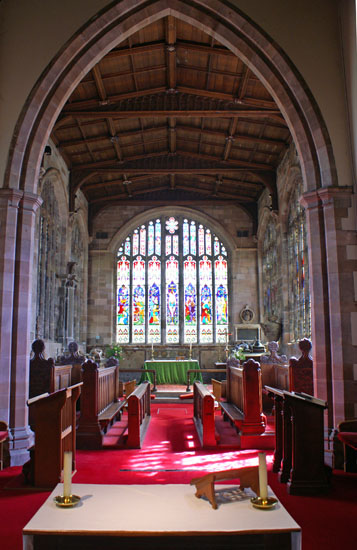|
|
||||||||||||||||||||||||||||||||||||||||||||||||||||||||||
|
Please sign my Guestbook and leave feedback |
||||||||||||||||||||||||||||||||||||||||||||||||||||||||||
|
Recent Additions |
||||||||||||||||||||||||||||||||||||||||||||||||||||||||||
|
|
||||||||||||||||||||||||||||
|
Coleshill is one of those churches whose fame is vested in a single treasure - in this case its extraordinary Norman font that dates from c12. It is a cylindrical font decorated with arcading which forms 11 “compartments” within which are 4 foliage designs, 4 “ordinary” figures, a crucifix, the Virgin Mary, and St John the Evangelist. It is carved from Caen stone beloved of the Normans for its ability to support complex and fine carving. Like all Norman fonts, it seems, Coleshill’s has its “lost and found story”, In this case it is believed that the font was plastered over to cover jewels set in its crucifixion scene. I don’t know whether the jewel story is true, but what we can be reasonably sure of is that the parliamentary despoilers would have defaced the “idolatrous” imagery had they seen it, so the theory is extremely plausible. It is generally believed to date from the mid twelfth century. Pevsner felt that the crucifix was ahead of its time The font - described by Pevsner as “outstandingly good” is not enough to have gained Coleshill Church a place in most books on church architecture. Just a few miles from Birmingham, it was massively restored in the c19 but its core probably dates from 1340. Despite, or perhaps because of, the restoration Coleshill is a very fine example of a Midlands town church. It is wide and light and the pinkish-orange stonework is attractive to the eye. Moreover, its site at the very top of the High Street in one of the oldest parts of the town gives it a commanding position and it can be seen from some miles away. The Church Guide claims the possibility of a Saxon minster in AD799. There is documentary evidence of a church in 1280 but, of course, the font points to there being a church at least 100 years before this. The church contains effigies of John de Clinton (d.1298) and his son - also John (d. 1316). Their forefather, Geoffrey de Clinton (d.1134) was chamberlain and treasurer to Henry I. It seems eminently possible that the font with its expensive imported stone and fine carving was commissioned by him. Intriguingly, the de Clinton family was connected with two other churches on this website - both surviving in their original Norman state - Iffley Church in Oxfordshire and Stewkley Church in Buckinghamshire. There is more about the de Clintons on those pages. The de Clintons gradually faded into obscurity losing most of their influence in the reign of Henry III. Coleshill Manor was acquired by the Digby family after the execution of the illustrious Simon de Montfort in 1495. There are many Digby effigies within the church but, sadly, not one to the most notorious of the Digbys - Sir Everard - who was one of the conspirators in the Gunpowder Plot and who suffered the dreadful consequences of being hanged, drawn and quartered at Tower Hill. As for the body of the church, the nave’s 4 eastern bays date from 1340. The chancel is c15 as is the tower. There are some distinctive carvings around the exterior window spaces although they have suffered somewhat from weathering Coleshill. is a very “tidy” church that has been heavily restored, but it has a sense of harmonious wholeness that is in stark contrast to many Gothic town churches that have suffered much from centuries of well-intentioned modernisation and alteration. Coleshill is, very simply, a “nice” church, clean and full of light. And its font is one of England’s very finest. |
|
|
||||||||||||
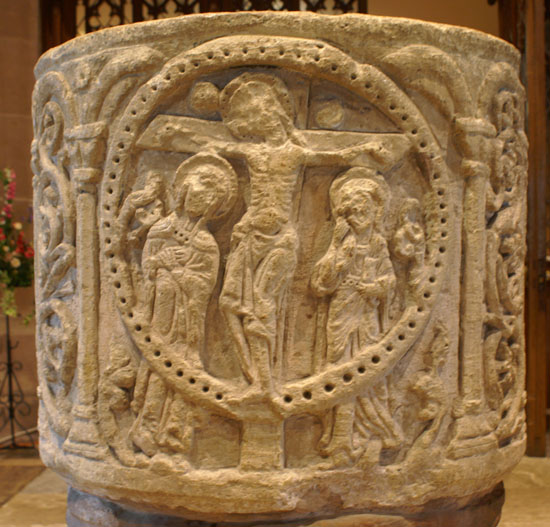 |
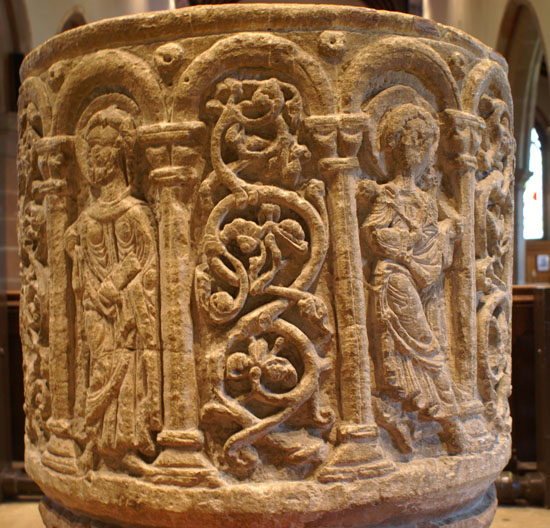 |
|||||||||||||
|
The Font |
||||||||||||||
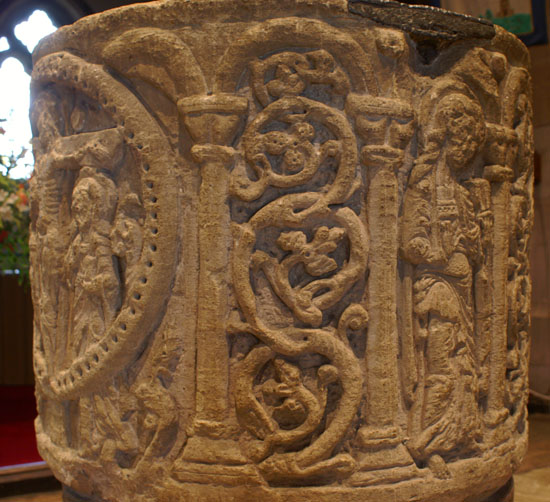 |
||||||||||||||
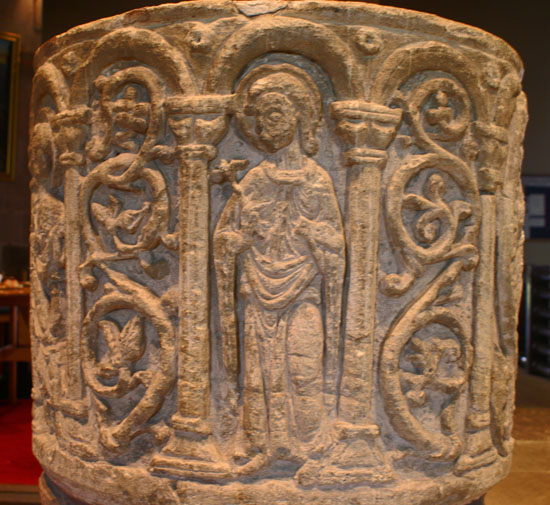 |
||||||||||||||
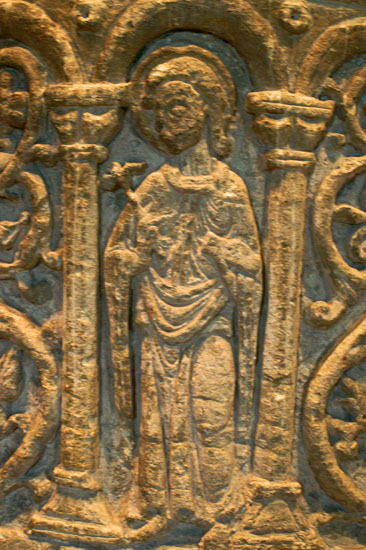 |
||||||||||||||
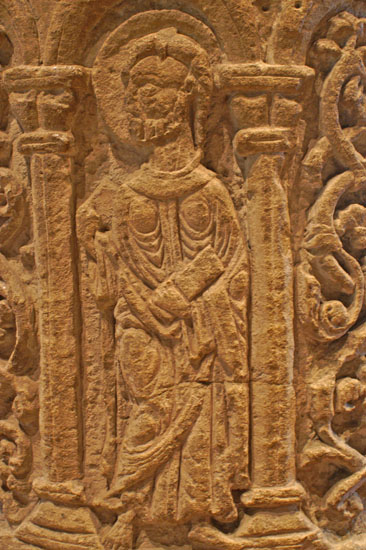 |
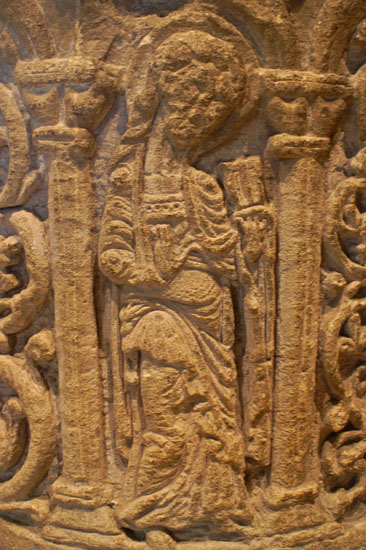 |
|||||||||||||
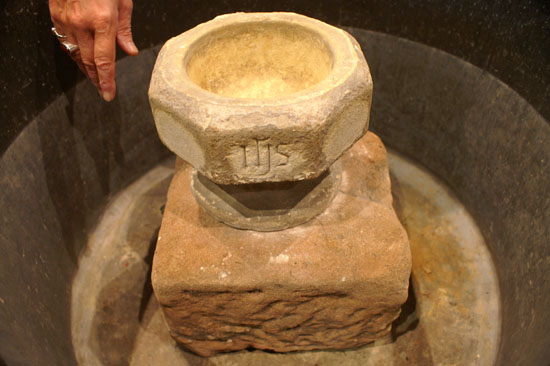 |
||||||||||||||
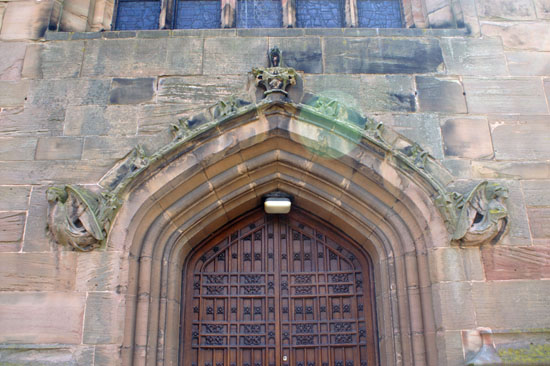 |
||||||||||||||
|
Left: We were shown this smaller stoup within the main font and were told what it was - I regret to say that I have forgotten! Right: The doorways have particularly fine and sophisticated label stops. The west door shown here has angels at both ends. |
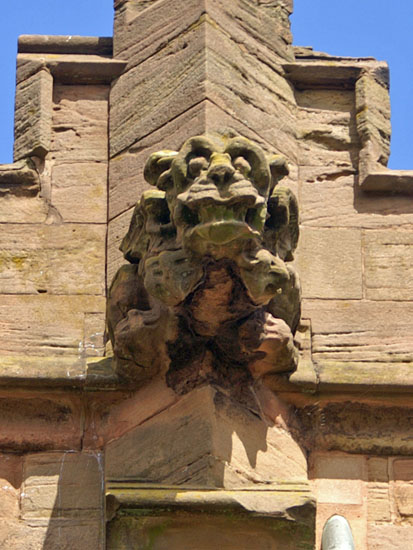 |
|||||||||
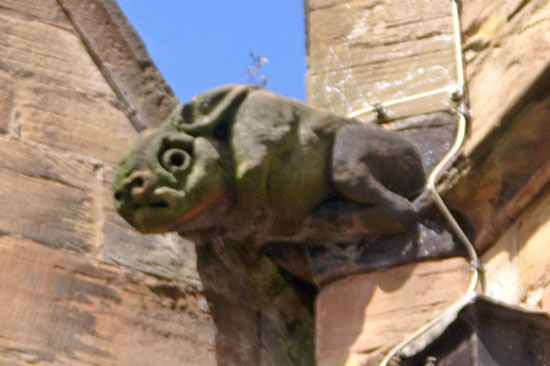 |
|||||||||
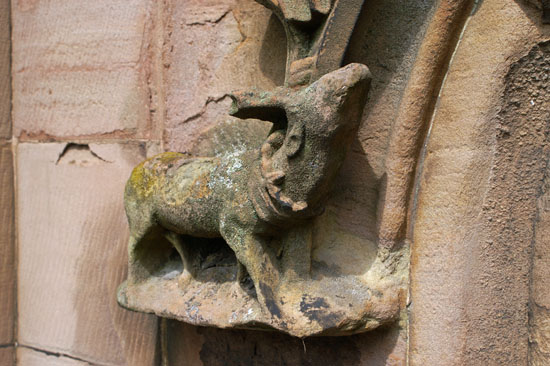 |
|||||||||
|
The are a couple of very nice grotesque figures, particularly (left) this fierce specimen. Top Right: Another Grotesque Bottom Right: A label stop of extraordinary sophistication - a hart. |
|||||||||
|
Footnote |
|||||||||
|
Between the ages of 13 and 17 I was a pupil at Coleshill Grammar School a quarter of a mile from the church. Needless to say, I never ventured into the church and, if I had, I am sure I would have failed to see a Norman font, although I would like to think that I would have been interested had it been pointed out. Diana and I called in here on the way to seeing Temple Balsall Church and, of course, it was my chance to let her see where I went to school. We arrived at the church to find a coffee morning in full swing. When she saw our interest in the font, one of the ladies struck up a conversation during which I mentioned being at the school. She asked if I had known Tom Wilson who was headmaster at the school (the “Beak” in my day) between 1956 and 1983 and I confirmed that he had been HM throughout my time there and that I had seen him at a School Reunion some years before. Sadly, it emerged that he had walked straight past us when we first arrived and when we were preoccupied by the font. That was an opportunity missed even though, as I revealed in the conversation, he had seen fit to lay the cane (“the cosh”) on my young posterior three times during my time at the school. He had a strong right arm as many boys will ruefully remember! Tom Wilson ran a fine school. I think we all thought him eccentric but he commanded immense respect. He wasn’t “loved”. he was just the Head - “The Beak” in our parlance. We had to put up with him and he had to put up with us! That’s how it was in those days. I suspect that many, like myself, would only reflect a long time later on the quality of the education we received under his rule and the part he played in that. For his time, some of his ideas were extremely avant garde. He introduced Russian into the curriculum 20 years before the fall of the Iron Curtain. He supervised skiing trips - an almost unheard-of activity for state school pupils in those days - to mention but two. It was only just before leaving school that many of us found out via a short newspaper story that during the war (when he was known as “Tug”) he had been a POW and was a peripheral character in Eric Williams’s book “The Wooden Horse”. In 2018, long after I wrote the preceding words, Tom Wilson finally died aged ninety seven. I can’t have been the only Old Coleshillian who was both amazed and gratified to see his death recorded in the Obituaries in both the Daily Telegraph and The Times. I don’t know how many times such an accolade has been granted to a state school head teacher but it can’t be many. Do they “make them like this any more?” I suspect not. |
|||||||||
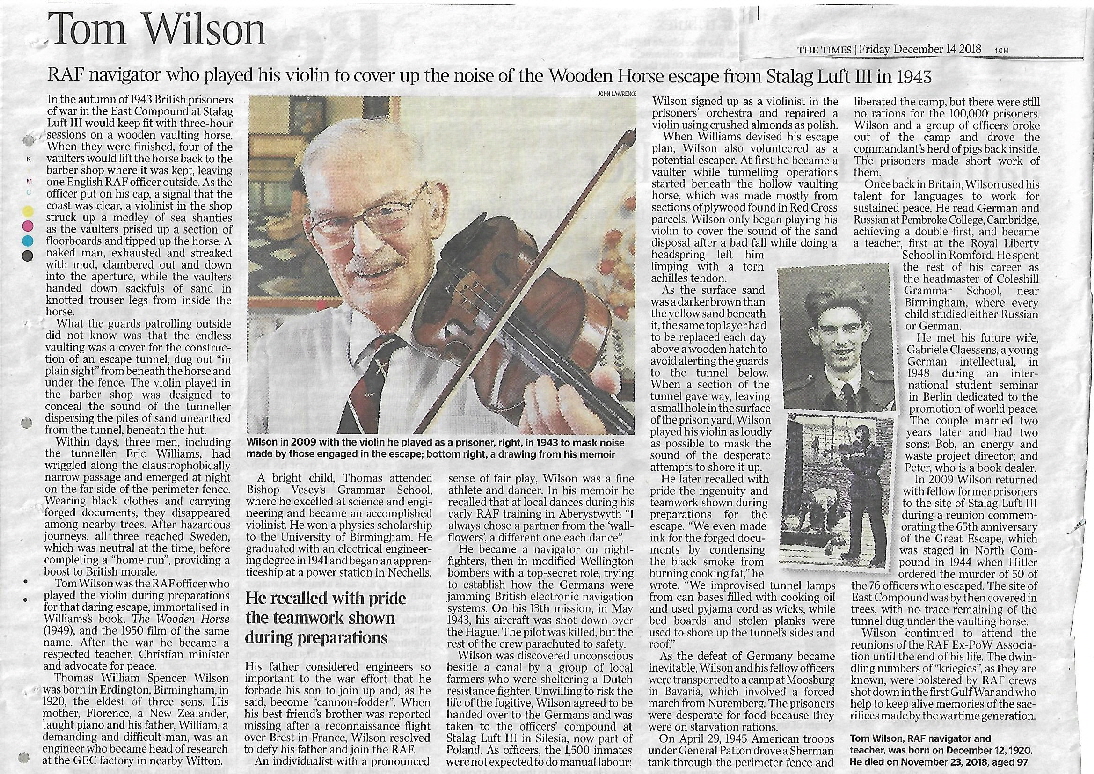 |
|
|
